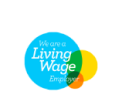With Drupal 7 coming to end of life in 2021, organisations with Drupal 7 web estates need to tool up for the change. Here’s a quick heads up on the What, Why and How.
What’s happening?
The Drupal community released Drupal 7 in 2011 and will stop supporting it in November 2021. Drupal 7 sites will continue to operate normally from this point onwards (the lights won’t go off!) but there will be no further security, stability or feature enhancements. Businesses that care about their users and their reputation will need to have migrated from 7 by this point.
The underlying architecture of Drupal 8 is radically different from Drupal 7 - it’s now based on the very cool Symfony Framework which gives Drupal better performance, interoperability, and coding standardisation (bottom line - your application becomes more stable, easier to integrate with other applications, easier to improve and faster to run). The modules (code elements that can add functionality to the Core) that were written for 7 will not run on 8 and will need to be replaced. In effect your application will need to be rebuilt and the content migrated.
Going forward, Drupal 8 will have a much smoother and incremental upgrade path (Drupal 9 comes out in 2020, with full backwards compatibility for Drupal 8 applications).
Why is this happening?
The traditional (and longstanding complaint) about Drupal was that its developer community driven roadmap was unpredictable, subject to delay and lacking clear forward visibility. As Drupal gained enterprise adoption, the user community clearly said; if you want to be taken seriously in the enterprise world, we need a reliable roadmap we can plan and resource against. Oh - and we need an underlying framework that promotes best practice, interoperability and smooth continuous feature enhancement.
The Drupal community listened and - with a considerable investment of time - produced a completely fresh codebase based on the robust object oriented coding practices in Symfony. The community then undertook the equally huge task of rewriting the 30,000 or so modules available for Drupal 7 into Drupal 8. That was 2015, and now we have a stable and extensive framework with a smooth upgrade path to 9, 10 and beyond.
For your business, this means better performance, easier upgrade and enhancements, better reliability and - to be frank - we get to spend more time on the cool stuff (driving your commercial KPIs) rather than the housekeeping. It’s also helps your CTO sleep at night.
OK, how do we do it?
If you are running a website that is in Drupal 7, chances are it needs a UX, branding and content design refresh. The chances that what you were projecting as a business 3 years ago is the same as what you are projecting now, or need to next year are - to be fair - pretty slim.
Using the Cohesion Acquia Cohesion Productivity Suite, we have perfected the art of migrating, updating and future-proofing B2B websites in Drupal 8. We do this for businesses with complex web applications, and large estates of brochureware applications. Acquia Cohesion helps us create design systems for your business which allows us to create multi-site web estates with consistent look and feel, consistent user experience, tailored messaging and content design - all based on robust infrastructures that allow us to keep your code secure and updated.
We do this for medium and large business with multiple brands / commercial propositions.
When should we do it?
If you are still maintaining and evolving a Drupal 7 website, every investment you make in its improvement (every feature enhancement, behavioural upgrade, design optimisation) will need to be discarded and rebuilt in the next 2 years. We would recommend you make that investment as soon as possible in a platform that you know will evolve gracefully into the foreseeable future.









